A BIRTHDAY TRIBUTE: The Flash! Hawkman! JSA! JLA! The Multiverse! And so much more!
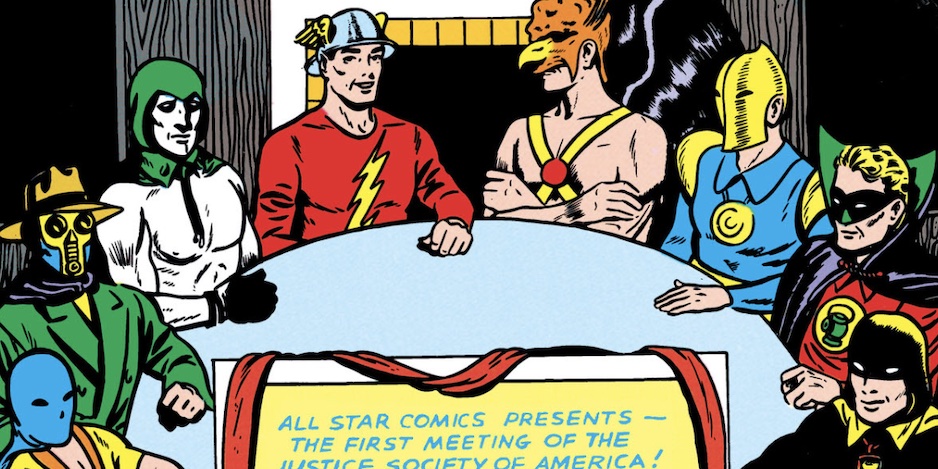
—
UPDATED 5/20/25: The late, great Gardner Fox — one of the chief architects of the DC Universe — was born 114 years ago, on May 20, 1911. This piece first ran in May 2023 — perfect time to reprint it. Right on. — Dan
—
By PAUL KUPPERBERG
What has Gardner F. Fox done for comics lately?
That’s a trick question because what Gardner Fox did for comics before he left the business to write novels in the late-1960s has never not paid dividends, especially his work at DC Comics — and especially his contribution to what many (well, me) consider the single most important comic book of the 1960s, The Flash #123 (June 1961) and the story “The Flash of Two Worlds.”
(By the way, this is Hugh Everett, the quantum physicist who originally conceived of the multiverse concept and this is a portrait of Gardner Fox by Gil Kane. Coincidence…? You be the judge!)
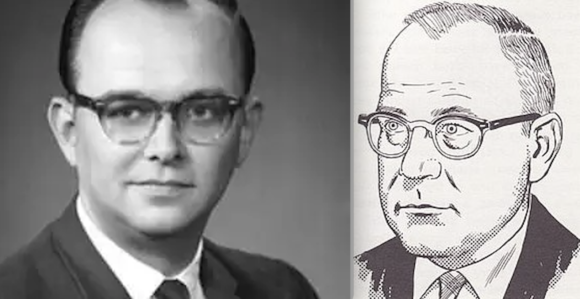
Although he got a law school degree from St. John’s College and was admitted to the New York State Bar in 1935, Fox (May 20, 1911 – December 24, 1986) turned instead to comic book writing. Mike’s Amazing World website has him credited with writing 18,868 pages over 1,630 stories from 1937 to 1973, but as I’ve discovered from my own online bibliography and researching others, that list is likely incomplete.
In a talk with Jim Steranko at the 1971 New York Comic Art Convention luncheon, Fox estimated that he had written some 50 million words over the course of his career, which included all those comics as well as short stories for pulp magazines ranging from Weird Tales to Amazing Stories to Baseball Stories to Fighting Western, and on to whatever other genres there happened to be, and dozens of novels for Ace, Gold Medal, Tower, Belmont, Pyramid, Signet, and others, many of which are available from the Gardner Francis Fox Library. He won several early fan awards, the Alley Award, for his work on Adam Strange, Justice League of America, and Showcase.
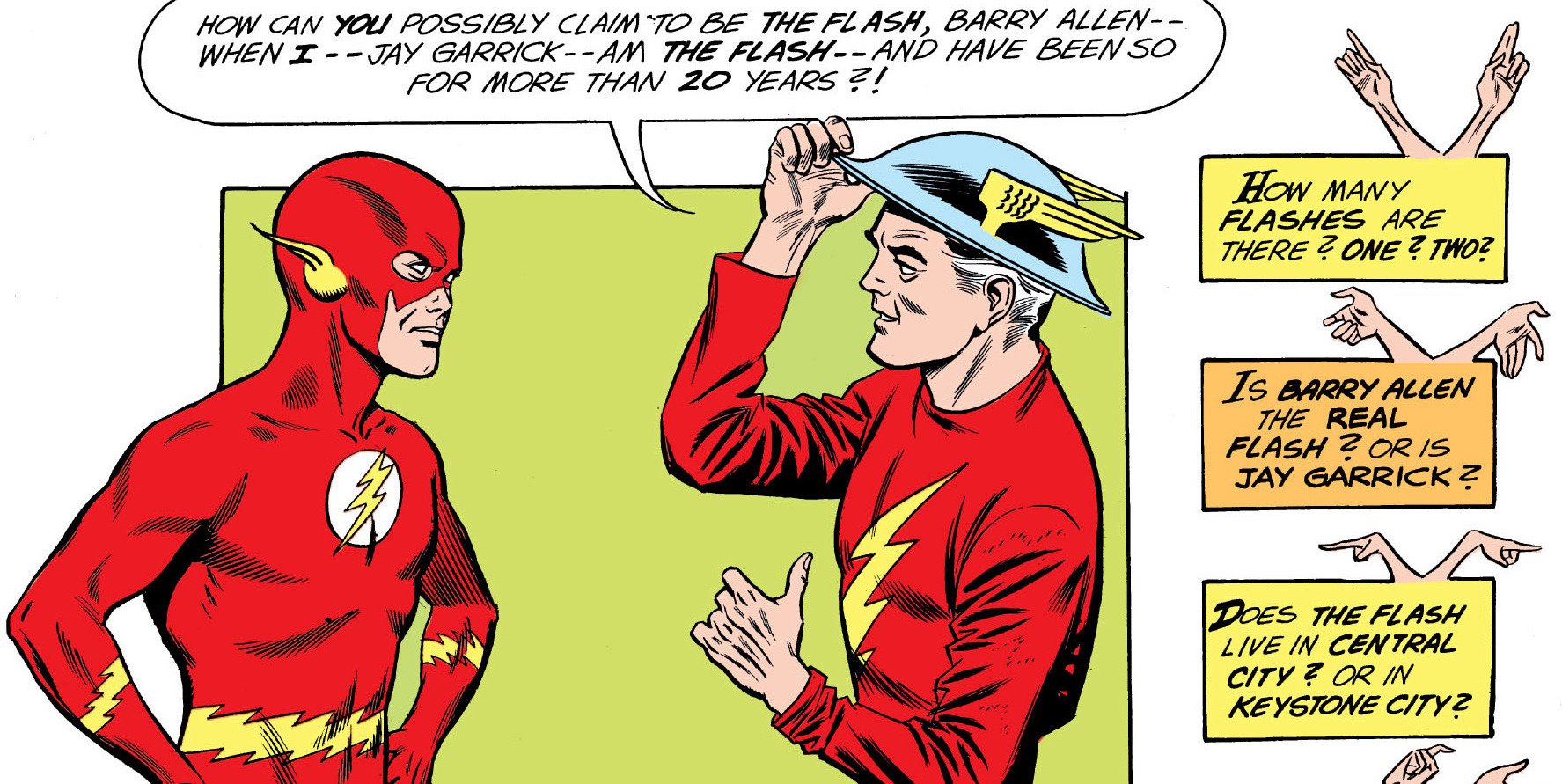
Fox led an interesting life. By far the best (and most entertaining) source of information on this legend is Jennifer DeRoss’ highly recommended Forgotten All-Star: A Biography of Gardner Fox (which you can order here). It’s a rare peek at a Golden and Silver Age pioneer about whom I knew little before I read it, a creator who not only wrote an array of DC characters, ranging from Batman (where he introduced such Bat-staples as the utility belt, the Bat-Gyro, and the Batarang) to Vigilante (the Greg Saunders version) and so many of the stories we loved, but also produced tales for publishers such as Magazine Enterprises, Timely, Columbia Comics, EC, Avon, and others.
Here then, MY 13 FAVORITE GARDNER FOX COMIC BOOK CREATIONS:
—
Speed Saunders, Detective Comics #1 (March 1937). Did he, or didn’t he? Fox stated in a text piece in Showcase #35 (December 1961) that he did indeed create the crusading district attorney character credited to “E.C. Stoner” (with art by Creig Flessel), “cashing in on my law school work.” Though that statement wasn’t given under oath, the court rules in its favor.
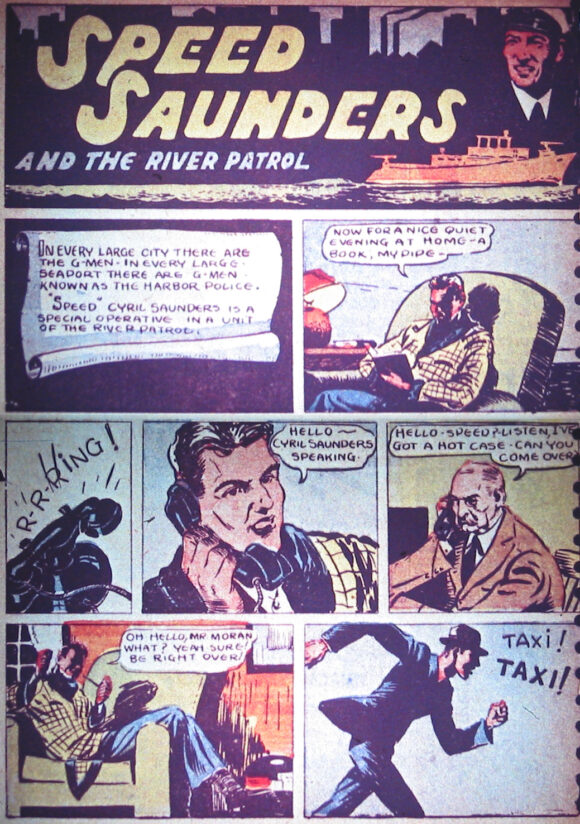
—
Sandman, New York World’s Fair Comics #1 (April 1939). The brainchild of Fox and artist Bert Christian, the original Sandman was the suited, gasmask-wearing Wesley Dodds, who came equipped with a gun that shot a gas that subdued the bad guys. Simple and with plenty of atmosphere, Sandman eventually morphed into a conventional superhero during his run in Adventure Comics, but not before he became a founding member of the Justice Society of America.
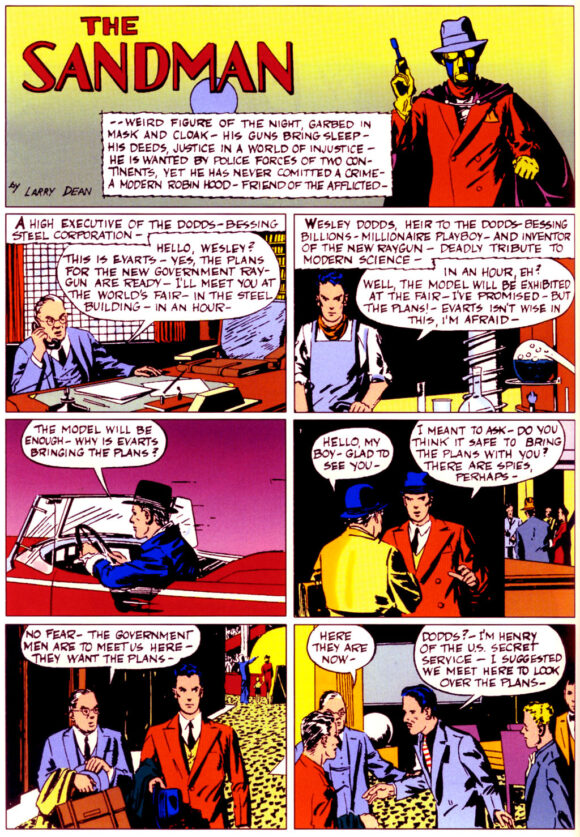
—
The Flash, Flash Comics #1 (January 1940). Watch out you don’t inhale hard-water fumes, kids! A legend was born, by Fox and Harry Lampert.
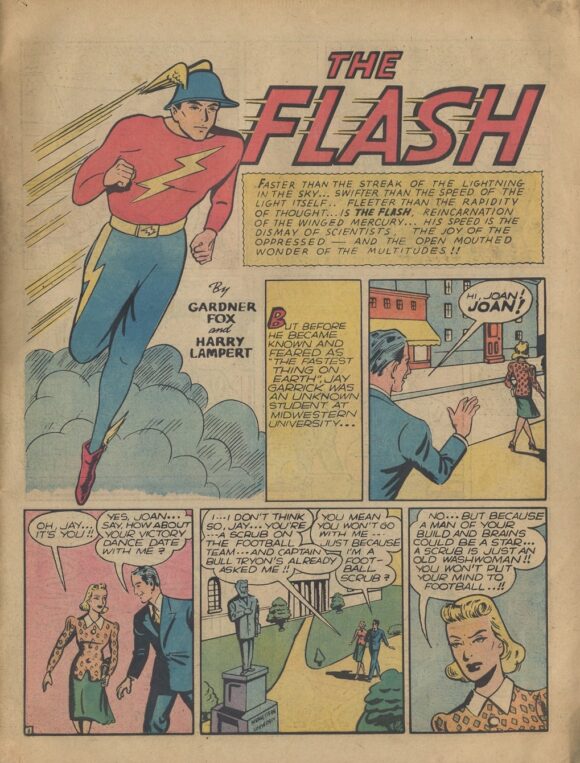
—
Hawkman, Flash Comics #1 (January 1940). Another legend, this one reborn, by Fox and Dennis Neville.
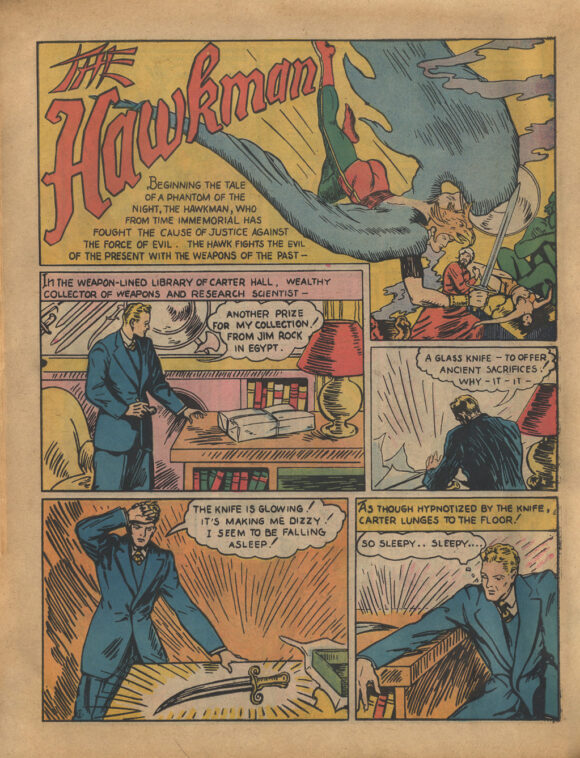
—
Justice Society of America, All-Star Comics #3 (Winter 1940). Superheroes had teamed up before in the pages of MLJ and Timely Comics, but the JSA was the first official super-team, stocked by All-American’s finest, which included several of Fox’s own co-creations.
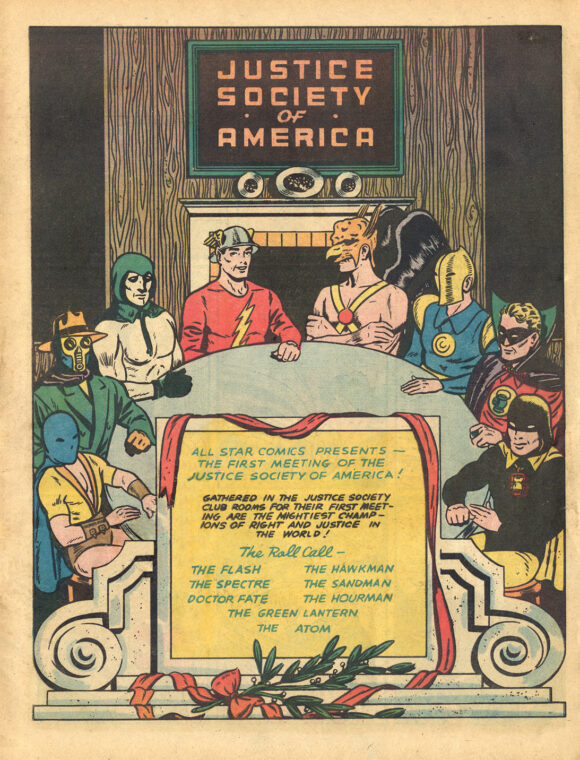
—
Doctor Fate, More Fun Comics #55 (May 1940). Fox and Howard Sherman made magic.
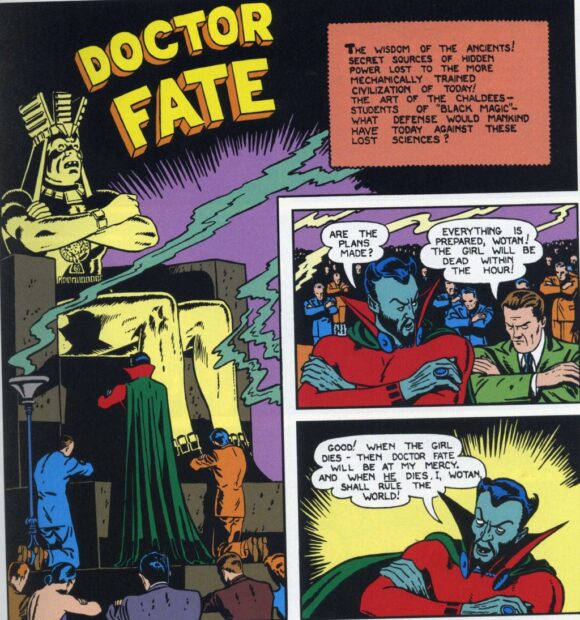
—
Skyman, Big Shot Comics #1 (May 1940): Co-created with editor Vin Sullivan and artist Ogden Whitney for Columbia Comics, Skyman was another well-trained, rich white guy with a wing-shaped airplane dubbed (wait for it!) the Wing that flew by the power of the planet’s magnetic poles.
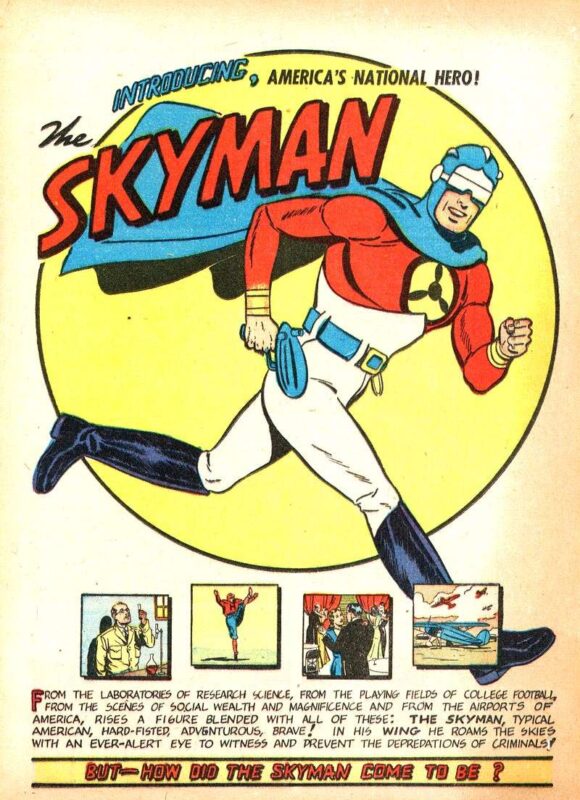
—
Crom the Barbarian: Out of This World Adventures #1 (July 1950). Credited with being the first comic book sword-and-sorcery series, Crom first drew sword in the color comics section of a fantasy pulp magazine published by Avon, with art by John Giunta.
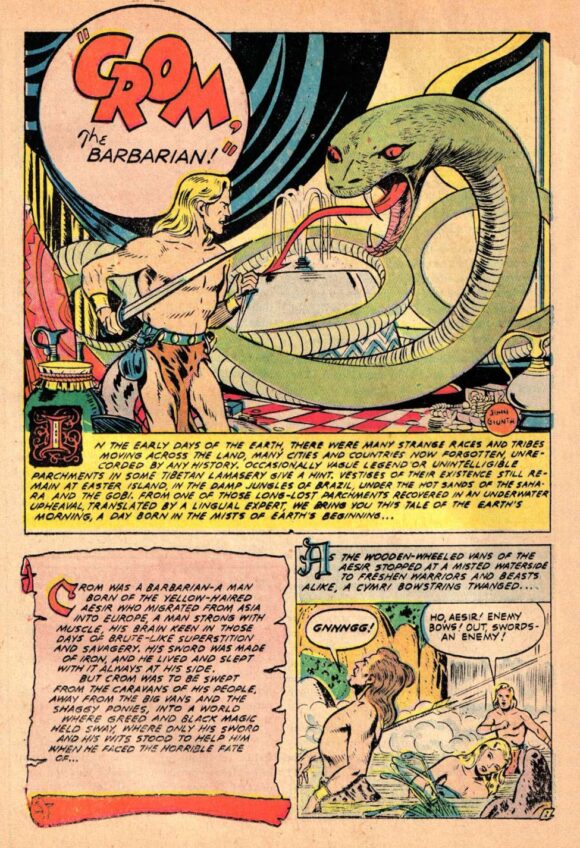
—
Justice League of America, The Brave and the Bold #28 (February/March 1960). When it came time to revive and revise the Justice Society as the Justice League of America, Julie Schwartz, who had also been the JSA’s last editor, wisely selected Fox, the scripter of a majority of those Golden Age stories, to write the new series. Mike Sekowsky did the art honors.
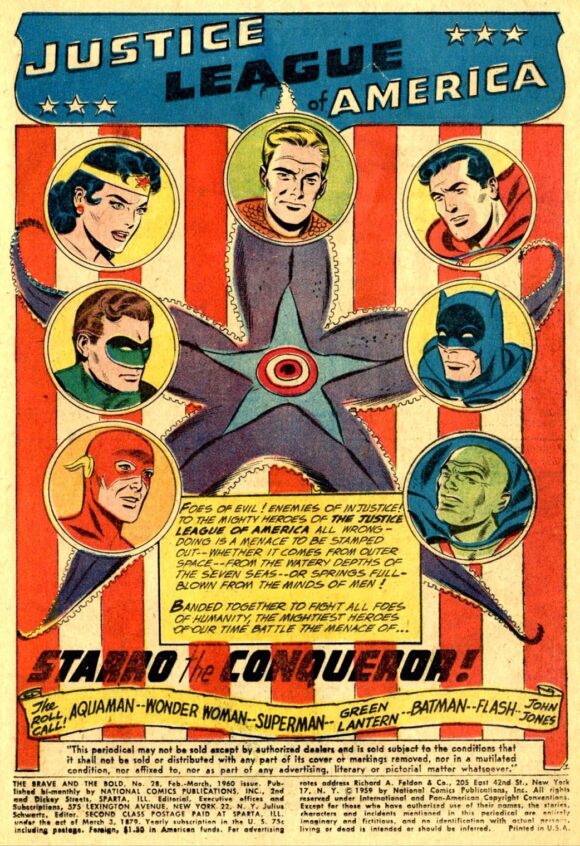
—
The Multiverse, The Flash #123 (June 1961): I know the seeds of the Multiverse were planted by editor Julie Schwartz and writer Robert Kanigher in “Mystery of the Human Thunderbolt,” Flash’s origin story from Showcase #4 (September/October 1956), but it was Fox and Infantino who brought the concept to life in this classic tale.
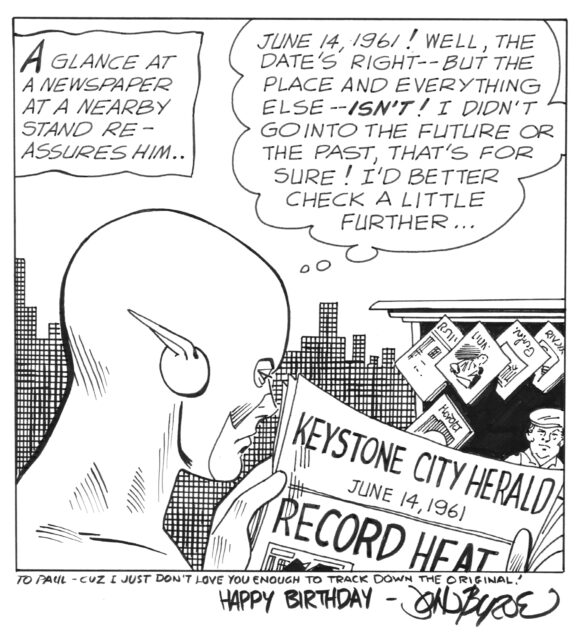
A recreation by John Byrne of the seminal Fox/Infantino/Giella panel from “The Flash of Two Worlds,” when the Flash learns he isn’t in Central City anymore from a newspaper dated on my birthday, the comic-book moment that made me a fan for life.
—
Zatanna, Hawkman #4 (November 1964). Her daddy Zatara, created by Fred Guardineer, was a Golden Age stalwart, debuting in Action Comics #1. Zatanna came along almost three decades later, courtesy of Fox, artist Murphy Anderson, and the Silver Age revival of so many of the Golden Age greats.
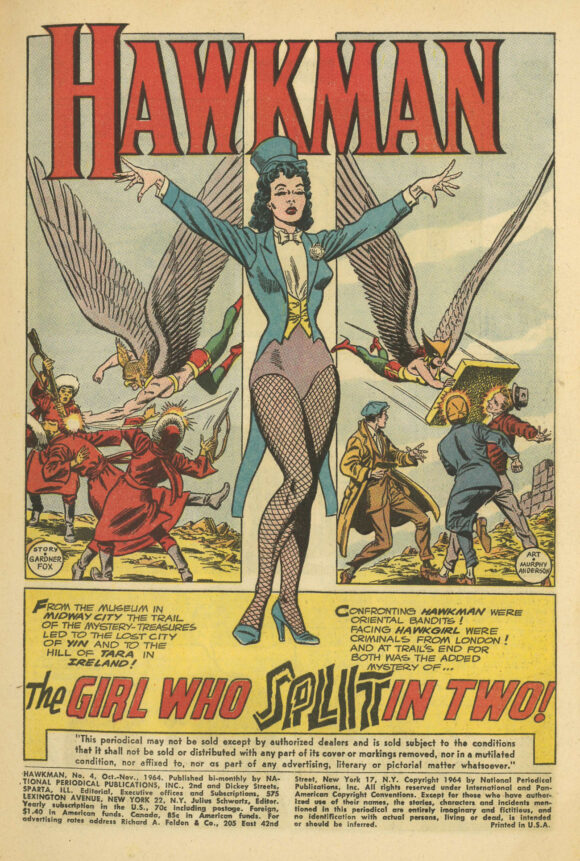
—
Batgirl, Detective Comics #359 (January 1967). Back in the day, Fox wrote a badass Batman, one who packed heat and wasn’t afraid to use it. Just ask the Mad Monk, whom the Dark Knight shot point blank with a silver bullet. In the ’60s, when Schwartz was handed the Batbooks after a decade of Jack Schiff’s silly alien and monster stories, he brought Fox back to do the atmospheric voodoo he doed back then. Guns were no longer allowed so Fox instead co-created a bombshell, the comic book Barbara Gordon/Batgirl, with Carmine Infantino.
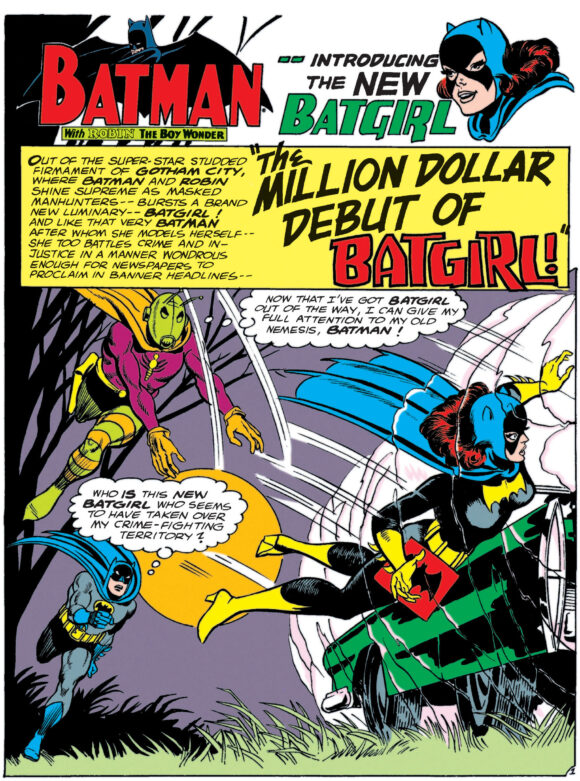
—
Red Tornado, Justice League of America #64 (August 1968). Not to be confused with Sheldon Mayer’s charming Golden Age “Ma” Hunkle version, the sentient android superhero was a later creation who resembled the original in name only.

—
MORE
— THE FLASH #123: An INSIDE LOOK at One of the Most Important Comics Ever. Click here.
— The TOP 13 Gardner Fox ADAM STRANGE Stories — RANKED. Click here.
—
PAUL KUPPERBERG was a Silver Age fan who grew up to become a Bronze Age comic book creator, writer of Superman, the Doom Patrol, and Green Lantern, creator of Arion Lord of Atlantis, Checkmate, and Takion, and slayer of Aquababy, Archie, and Vigilante. He is the Harvey and Eisner Award nominated writer of Archie Comics’ Life with Archie, and his YA novel Kevin was nominated for a GLAAD media award and won a Scribe Award from the IAMTW. Now, as a Post-Modern Age gray eminence, Paul spends a lot of time looking back in his columns for 13th Dimension and in books such as Direct Conversations: Talks with Fellow DC Comics Bronze Age Creators and Direct Comments: Comic Book Creators in Their own Words, available, along with a whole bunch of other books he’s written, by clicking the links below.
Website: https://www.paulkupperberg.net/
Shop: https://www.paulkupperberg.net/shop-1
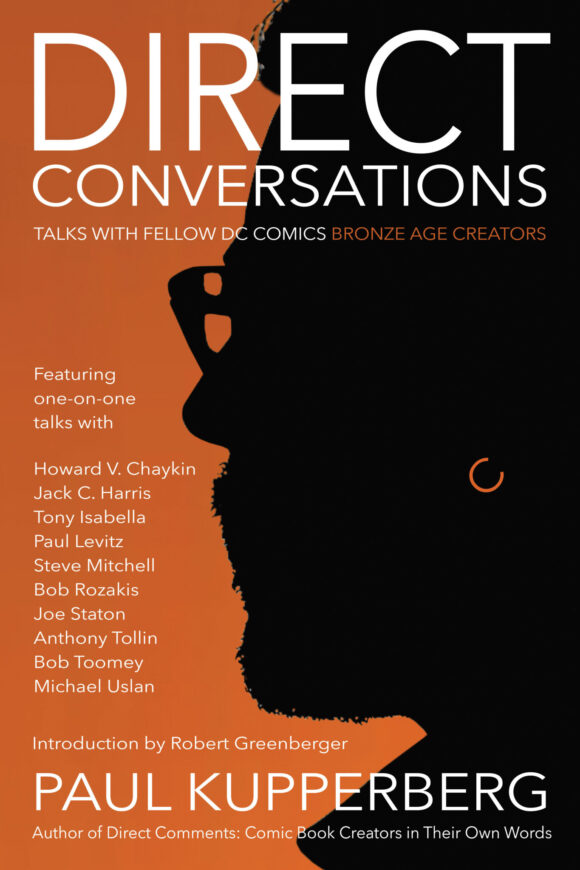

May 20, 2023
So many great and fun elements that sadly DC has discard. The creation of Earth-2 has to be my top one. The only thing I would have changed about that original story is having both worlds set in the same time. The Golden Age works best in the 30s/40s timeframe. Great article to enjoy with my Saturday coffee. Thanks, Paul.
(* typo, “… voodoo he doed back then.”)
May 20, 2023
Not a typo. Purely intentional, I’m certain. “You do that voodoo that you do so well.”
May 20, 2023
I doed it on purpose.
May 20, 2023
Wasn’t JLA #64 the first Dick Dillin drawn issue?
I remember picking this up on a pharmacy newsstand in Vermont when the family was on vacation in the day…Im old…
May 21, 2023
Interesting that Skyman was a previous character to the Star Spangled Kid adultified by Roy Thomas
May 20, 2025
Inker Kurt Brugel has been working with the Gardener estate to republish all of his prose, and, quite passionately, create new comic stories for Crom the Barbarian.
May 20, 2025
Fox really was a major architect of the DC Universe. Thanks for an enjoyable list.